边界之窗,船桥,千叶,日本
2016-10-20司马蕾
边界之窗,船桥,千叶,日本
建筑设计:增田信吾+大坪克亘建筑师事务所
Architects: Shingo Masuda + Katsuhisa Otsubo Architects

1 外景/Exterior view
这是一栋钢混结构的两层建筑,在休息日是供业主全家过周末用的住宅,工作日则作为业主经营的工作室来使用。
业主对于建筑的内装和外装的意向有着清晰的构想,我们通过和他沟通商讨,让设计基本上能遵从他的意愿来进行。同时,我们也希望通过设计,让建筑和庭院间的边界能够不特别偏向哪侧,而是能取得两者间的平衡。
面向庭院的窗框、玻璃窗扇、窗帘没有采用常见的将这些构件集中在窗洞内部进行设计的做法,而是让建筑的窗洞一字排开直接面向庭院,窗的构件则另外形成直通屋顶的整体墙面。
共由16扇可活动的玻璃窗构成的整体玻璃墙通过反射阳光,能将光线带到庭院内部。反射的光线在太阳高度较高的夏天能到达阳光直射不到的角落,在阴暗的冬天则能让整个庭院保持亮堂。实墙与玻璃墙间形成的极薄的3层吹拔空间就像中庭一般,让灼热的空气能在到达建筑内部之前就顺着玻璃墙上升到屋顶外,达到排热的目的。
玻璃窗扇以二层的窗洞需要的扶手的高度为界划分为上下两块,所以窗框的横杆正好能作为扶手来使用。当打开窗时,窗洞上除了必须的扶手等之外没有多余的构件,形成非常开放的场所。
每块玻璃窗扇高4.2m,宽1.75m,非常高大,但又需要让人能够不费力的开启。为此,仔细考虑构成窗扇的钢框和嵌在其中的玻璃的重量和厚度,让窗扇能尽量地轻质化非常重要。最后,我们选用了能耐受变形,在弯曲10cm左右的时候玻璃不会开裂、窗扇也不会脱落的构造,以应对暴风时的需要。窗扇的各块玻璃的比例和尺度的设计从建筑的内部来看非常平常,但从外侧看时则整体上连接在一起,形成巨大的尺度感,从而同时实现宁静的室内空间氛围和大气的建筑外观。
建筑的内侧是属于个人的室内空间,而外侧则必须具备与周边融合的公共性,当两者相对时,边界之处应该如何应对呢?我们的考虑是让两种不同的属性统一到一种情景中去,让边界部分不只关照其中一侧,而是综合各种不同的情况,平衡各个不同的尺度和它们互相之间的影响。我们希望设计不仅能考虑到建筑和空间本身的需求,更要能改变对建筑空间和庭院规划有着重要影响的、形成场所的那些前提条件。换而言之,不是要设计建筑,而是要在日常深入思考设计中需要处理的重要条件,提出“针对环境的提案”。□(司马蕾 日译中)
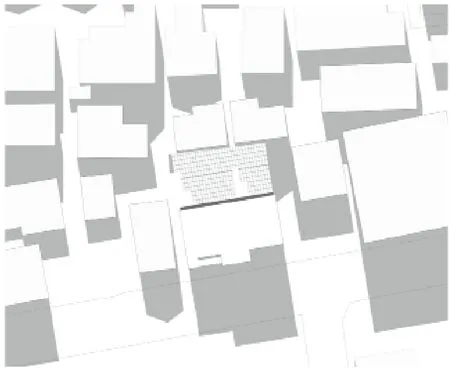
2 总平面/Site plan
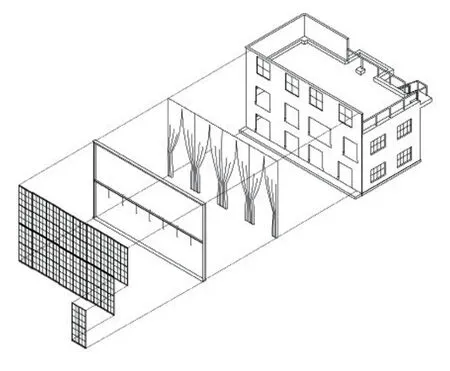
3 轴测/Axonometric

4 外景/Exterior view
This is a two-story building in reinforced concrete,which has been utilized as a weekend house for the owner's family,and also serves as his studio during the weekdays.
The owner had a clear plan for the interior and exterior of his building.After our conversation with him,we decided to ensure the design would closely follow his demands.We attempt to strike the balance between the building and its courtyard,instead of drawing a boundary and highlighting one side at the expense of the other.
We did not employ any conventional approach for window frames,glass casements and curtains that face toward the courtyard,usually designed all together as a set.On the contrary,we designed all the windows to line up facing toward the courtyard and,together with all window components,form a huge wall which leads up to the roof of the building.
The enormous glass wall that consists of 16 movable glass windows brings the reflected sunlight into the courtyard.In summer,the solar elevation angle rises higher; the refected light can reach the corner which the direct sunlight cannot.In sunless winter,the reflected light can keep the entire courtyard bright.The 3-layered,extremely thin space between the solid wall and the glass wall acts as an atrium,which aids heat dissipation by capturing rising heat against the glass wall and discharging it out of the roof before it reaches the inside of the building.
The balustrades of windows on the second foor functions as a boundary which divide the glass wall into two parts; the upper part and lower part.Therefore,the "boundary" - rails,can be used as balustrades.When the window is opened,there are no other components but rails,ensuring a very open space.
Each casement of glass window is 4.2m in height and 1.75m in width.They are massive yet easy to move.The selection of steel frames for the window,as well as the weight and thickness of embedded windows,became very important as they had to be as light as possible.In the end,we decided to use an anti-deformation structure,in prevention of window panel,and allow approximately 10cm of a fexibility for the bending of casements,in the case of storm winds.The proportion and dimension of each glass in the casement seems fairly ordinary from the inside looking out.However,when viewed from the outside,it presents integrality and a sense of spatial scale.As a result,it provides a peaceful indoor space and magnifcent look at the same time.
The interior of a building is generally reserved as a private indoor space,while the exterior must take into consideration the surrounding environment.When these two meet,how can we deal with the boundaries that separate them? We propose to combine two different parts into one,which unifies theirdiversity as well as equilibrates their varied dimensions and influences instead of tackling just one part.We hope the design not only meets the needs of its primary function as a building,but also changes prerequisites towards the design of architectural space and courtyard.In other words,it is not merely an architectural design,but presenting a proposal to its surrounding,which requires us to think deeply about the important conditions that we must consider when designing.□(Translated by Dandan Wang)
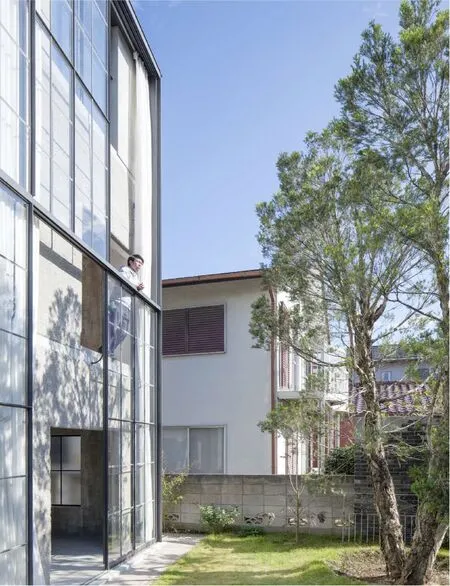
9 外景/Exterior view
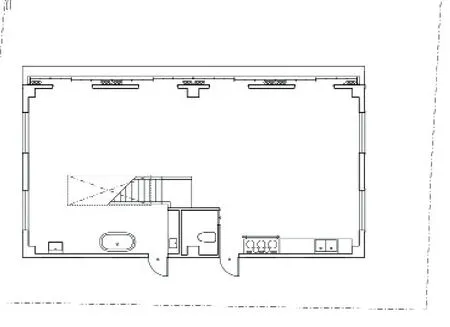
6 首层平面/Floor 0 plan

7 二层平面/Floor 1 plan
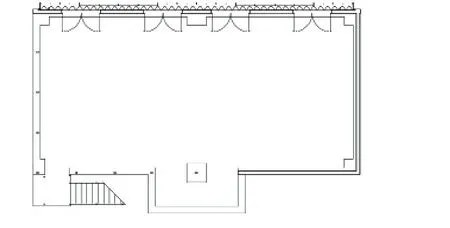
8 屋顶平面/Roof plan

5 外景/Exterior view
项目信息/Credits and Data
客户/Client: SOULPLANET
功能/Program: 周末住宅、工作室/Weekend house,location studio
建筑设计/Architectural Design: Shingo Masuda,Katsuhisa Otsubo(Shingo Masuda + Katsuhisa Otsubo Architects)
监理/Supervision: Shingo Masuda,Katsuhisa Otsubo(Shingo Masuda + Katsuhisa Otsubo Architects)
主体结构/Main Structure: 钢混结构/Reinforced concrete structure
基础形式/Foundation: 板型基础/Mat foundation
基地面积/Site Area: 349.33m2
占地面积/Building Area: 113.32m2(凸窗部分/Bay window: 3.41m2)
建筑面积/Floor Area: 210.04m2
建筑密度/Building Density: 32%
容积率/Floor Area Ratio: 60%
层数/Number of Floors: 2
建筑高度/Height: 8575mm
檐高/Eaves Height: 8292mm
净高/Clearance Height: 首层/Floor 0: 2850mm(开口/ Opening: 1920mm); 二层/Floor 1: 2610mm(开口/ Opening: 2050mm); 凸窗/Bay window: 8280mm
停车位数量/Parking Lot: 1
设计时间/Design Period: 2012.01-2013.03
建造时间/Construction Period: 2013.05-2013.12
摄影/Photos: Shingo Masuda + Katsuhisa Otsubo Architects
Boundary Window,Funabashi,Chiba,Japan,2013

10 屋顶外景/Exterior view of the roof
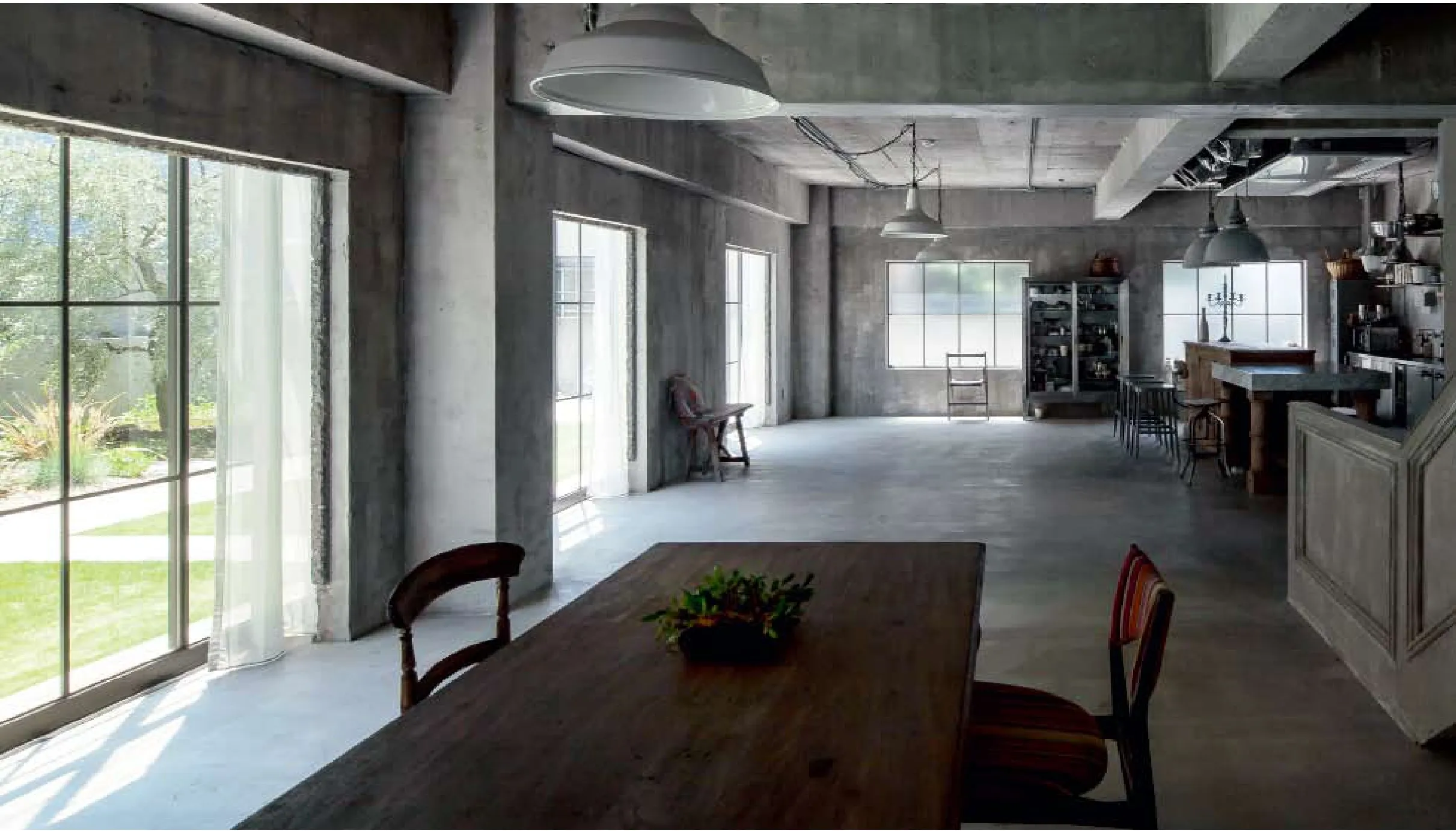
11 首层内景/Interior view of foor 0
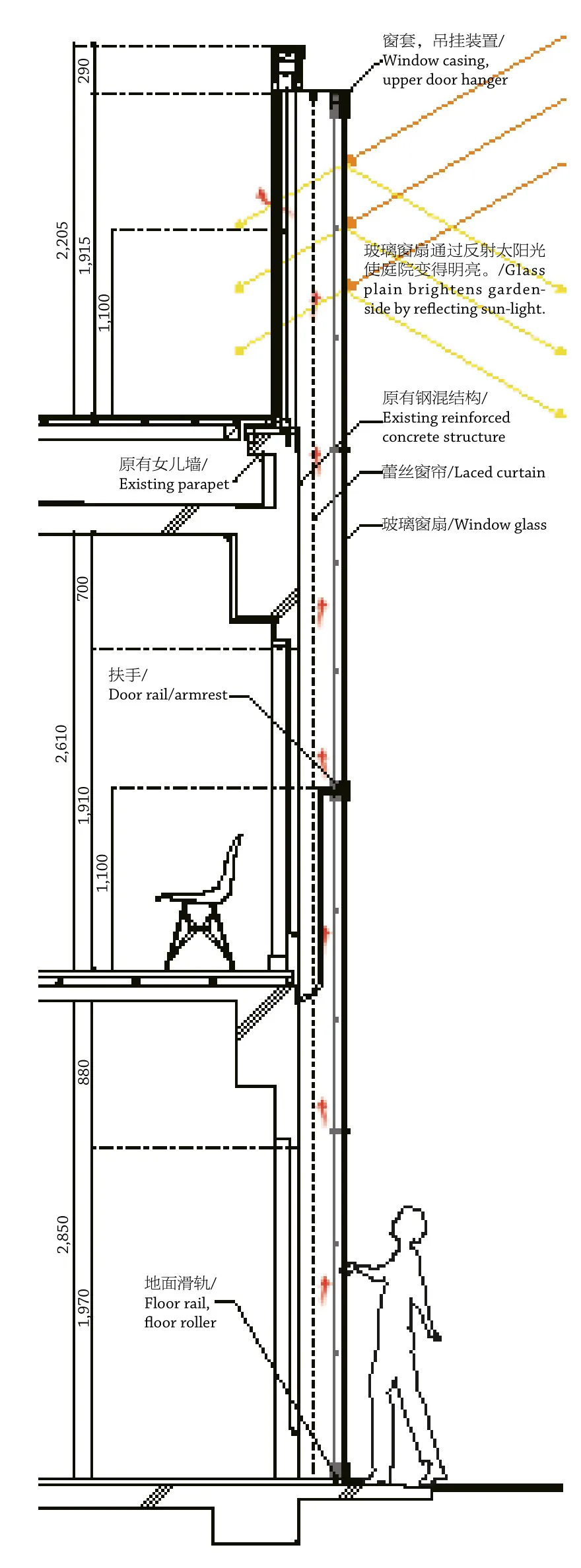
12 剖面详图/Sectional detail
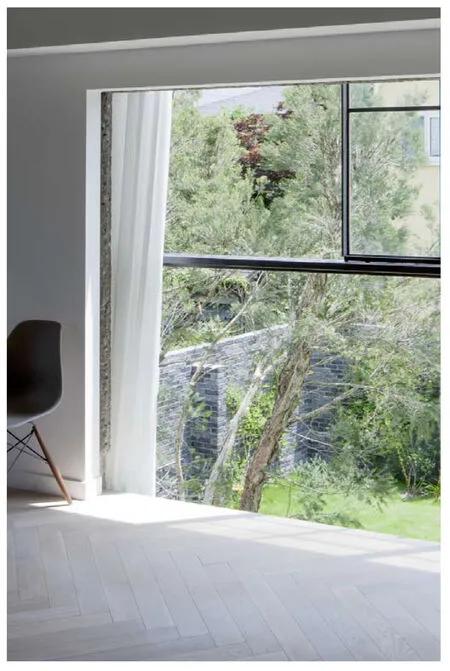
13 二层内景/Interior view of foor 1
